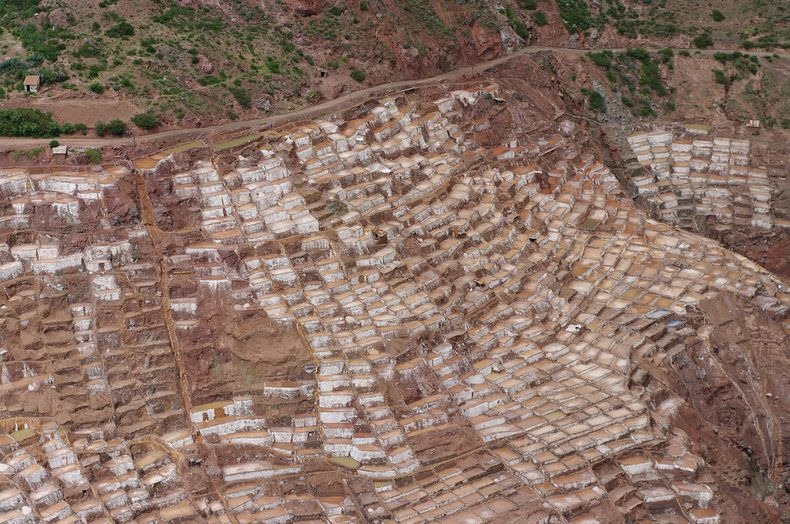Located 40 kilometers north of Cuzco in Peru, in the Sacred Valley of the Incas, lies the town of Maras, well known for its nearby salt evaporation ponds, that’s been in use since Inca times. Thousands of uneven square-shaped ponds dot the slopes of the hillside less than a kilometer west of the town. These pre-Inca salt pools were constructed during the Chanapata culture between AD 200 and AD 900. Highly salty water emerging from the Qoripujio spring, close to the head of the valley, is directed into an intricate network of tiny channels constructed so that the water runs gradually down onto the several hundred ancient terraced ponds. Almost all the ponds are less than four meters square in area, and none exceeds thirty centimeters in depth. The flow of water is carefully controlled and monitored by the workers. The altitude of the ponds slowly decreases, so that the water may flow through the myriad branches of the water-supply channels and be introduced slowly through a notch in one sidewall of each pond.
As water evaporates in the arid Andean air, the water becomes supersaturated and salt precipitates as various size crystals onto the inner surfaces of a pond's earthen walls and floor. The pond's keeper then closes the water-feeder notch and allows the pond to go dry. Within a few days the keeper carefully scrapes the dry salt from the sides and bottom, puts it into a suitable vessel, reopens the water-supply notch, and carries away the salt. The salt pools are traditionally allotted to the citizens of Maras wishing to harvest salt. Usually there are many unused salt pools available to be farmed. Any prospective salt farmer needs only locate an empty currently unmaintained pond, consult with the local informal cooperative, learn how to keep a pond properly within the accepted communal system, and start working.














No comments:
Post a Comment